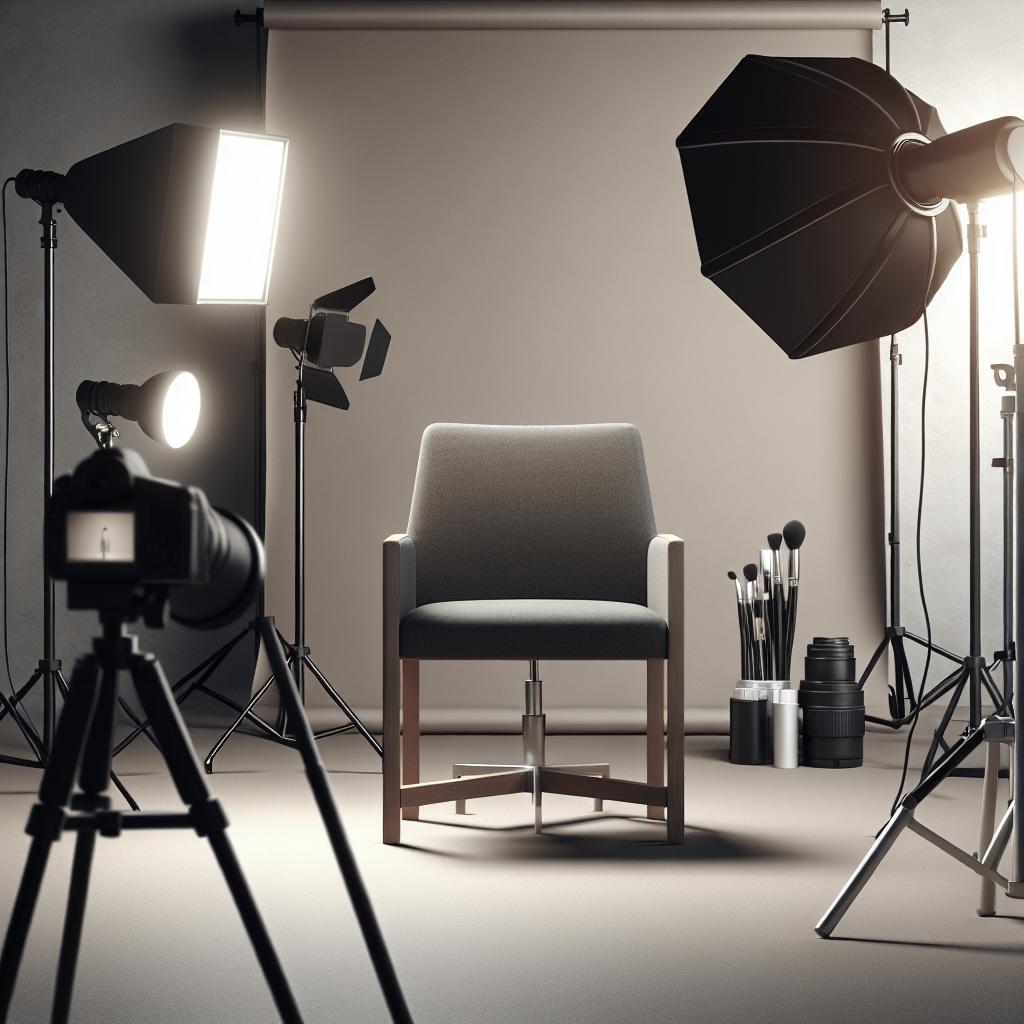“`html
How to Shoot a Professional Headshot
Creating a professional headshot is both an art and a science. It’s not just about pointing the camera at your subject and clicking; it requires understanding lighting, posing, and interaction with your client to capture their best look. In this guide, we’ll explore essential techniques to shoot a professional headshot, focusing on avoiding extreme poses, enhancing the jawline, maintaining a natural expression, collaborating, and setting up the right lighting and backdrop. With these strategies, you can elevate your photography and deliver images that truly stand out.
Avoid Extreme Posing
Simplicity in posing can often lead to more authentic and professional results. While it might be tempting to try complex angles and dramatic poses, such tactics can lead to forced and unnatural looking images. Instead, focus on small adjustments that can subtly enhance your subject’s features. Adjusting the shoulders, slightly tilting the head, or aligning the posture can all make significant improvements in the headshot’s final look.
Another factor to keep in mind is the comfort of your subject. Extreme poses may not only look awkward but also feel uncomfortable, leading to tense expressions. By sticking to natural postures, your subject will feel at ease, resulting in a more genuine expression. Remember, the goal is to portray your client in the most flattering yet true-to-them manner.
Get That Jawline Out
The difference a defined jawline can make in a headshot is remarkable. A strong jawline can impart a sense of confidence and clarity to the subject’s appearance. To achieve this, instruct your client to slightly extend their neck forward. This movement elongates the neck, bringing the chin out from the neck while eliminating any potential double chin.
Additionally, guiding them to slightly tip their chin down can make the eyes appear larger and add more contrast to the jawline. It’s a minimal adjustment but is crucial in focusing the viewer’s attention on the face and not on any distractions. This technique is especially effective for professional headshots needed for corporate settings, where poise and professionalism are paramount.
Never Say, “Say Cheese!”
Encouraging a natural, relatable expression should be the priority when capturing headshots. Asking your client to “say cheese” usually results in forced smiles that lack authenticity. To promote natural expressions, create a relaxed environment and engage in conversation to make the experience enjoyable.
Shooting tethered can greatly enhance communication during the session. It allows you to review images immediately and provide real-time feedback, which can be invaluable for adjusting expressions, tweaking poses, and ensuring that your client’s appearance—down to clothing and makeup—is flawless. This interactive process not only improves the quality of each shot but builds trust and comfort with your client.
Shoot Tethered and Collaborate with Your Client
Shooting tethered is a technique where your camera is connected to a computer, allowing instant viewing of the images during a photoshoot. This is a powerful tool for photographers shooting professional headshots as it offers an immediate visual feedback loop for both photographer and subject. You and your client can review shots in real-time, enabling quick adjustments to be made on the fly, which can significantly enhance the final output.
Collaboration during a headshot session is key to capturing compelling images. As you shoot tethered, actively involve your client in the process. Encourage them to provide input on what angles and expressions they feel most comfortable with. This mutual collaboration not only results in a photo that pleases both parties but also creates a more enjoyable experience for your subject.
Use a Simple, Flattering Light and Backdrop
Lighting is one of the most critical components in achieving a professional headshot. Aim for soft, flattering light that minimizes shadows while highlighting the subject’s best features. Natural light can be a great starting point, but if you’re working with artificial light, consider using softboxes or diffusers to achieve a similar effect.
The backdrop should complement the subject without distracting. Neutral colors are often preferred as they draw attention to the person rather than the background. Moreover, ensure that the backdrop suits the purpose of the headshot, whether it’s for a corporate profile, personal branding, or actor portfolio, aligning with the desired tone of the portrait.
Some Final Thoughts
Shooting a professional headshot requires a blend of technical skill and interpersonal acumen. As a photographer, it is important to refine your techniques but also to adapt to each client’s unique personality and preferences. By focusing on genuine expressions, simple yet effective posing, and collaborative techniques, you can ensure your photography leaves a lasting impression.
Remember, each headshot you take is a reflection of both your subject and your craft. Take the time to polish your technique and enjoy the creative journey. Whether you’re working with seasoned professionals or first-timers, your ability to capture personality and essence is what gives life to a still image.
| Key Focus | Summary |
|---|---|
| Avoid Extreme Posing | Simple, natural postures result in more genuine and professional-looking images. |
| Get That Jawline Out | Enhance the jawline by having the subject extend their neck and lower their chin. |
| Never Say, “Say Cheese!” | Promote relaxed expressions through natural interactions and shooting tethered. |
| Shoot Tethered and Collaborate | Use tethering for real-time feedback and involve your client for improved results and satisfaction. |
| Use a Simple Light and Backdrop | Select soft lighting and neutral backdrops to keep focus on your subject. |
| Some Final Thoughts | Combine technical skills with client collaboration for impactful and personalized headshots. |
“`

